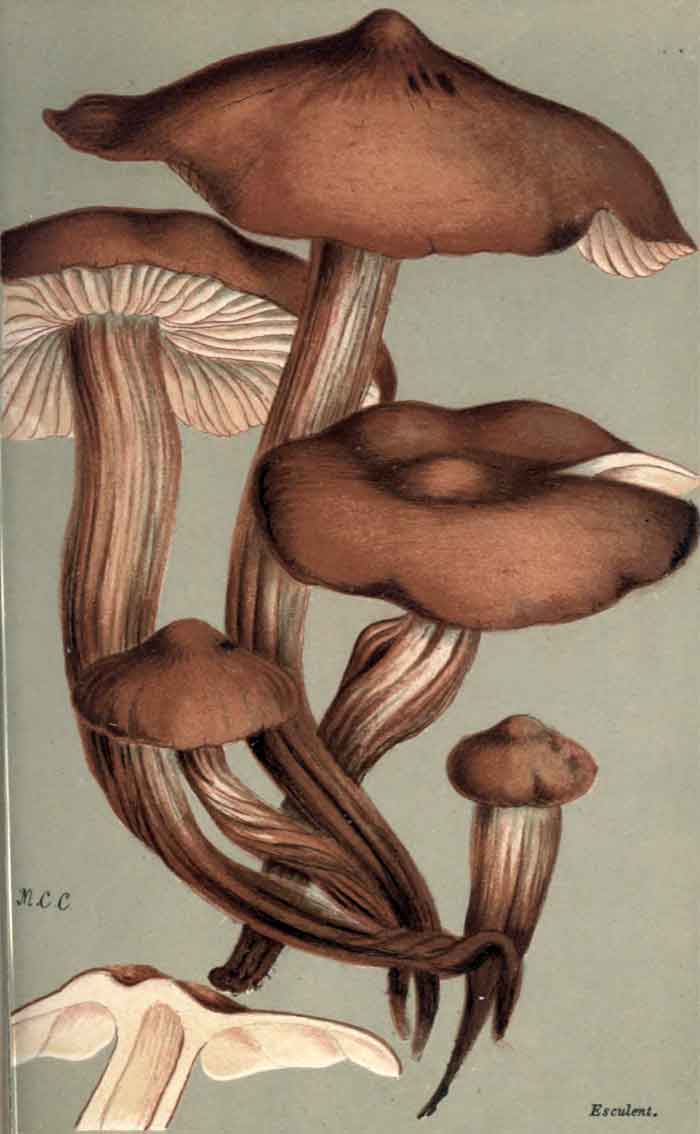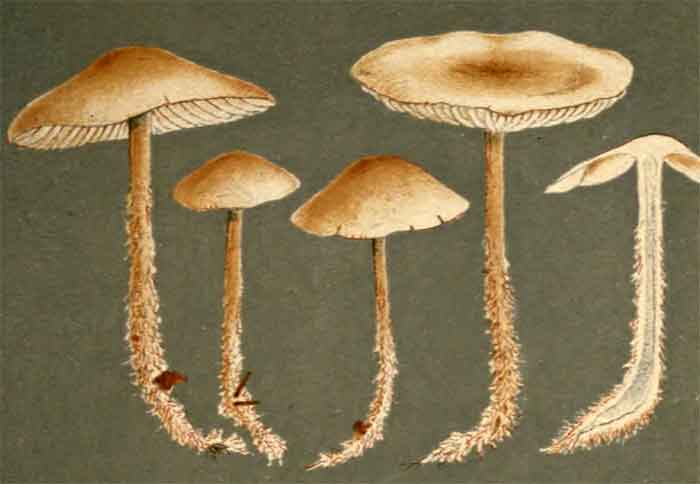Gymnopus fusipes
Superregnum: Eukaryota
Regnum: Fungi
Subregnum: Dikarya
Divisio: Basidiomycota
Subdivisio: Agaricomycotina
Classis: Agaricomycetes
Subclassis: Agaricomycetidae
Ordo: Agaricales
Subordo: Marasmiineae
Familia: Omphalotaceae
Genus: Gymnopus
Sectiones: G. sect. Androsacei – G. sect. Gymnopus – G. sect. Impudicae – G. sect. Levipedes
Species: G. agricola – G. albistrictus – G. alcalinolens – G. allegreti – G. alpicola – G. amygdalisporu – G. atratoides – G. atrigilvus – G. aurantiacus – G. avellaneidiscus – G. avellaneigriseus – G. ceraceicola – G. hakaroa – G. imbricatus – ...
Name
Gymnopus (Pers.) Gray, 1821
Type species:Gymnopus fusipes (Bull.) Gray, 1821
Synonyms
Dictyoploca Monagne ex Pat., 1890
Setulipes Antonín, 1987

Gymnopus fusipes

Gymnopus hariolorum
References
Primary references
Gray, S.F. 1821. A natural arrangement of British plants. 1:1-824
Additional references
Cooper, J.A.: Nomenclatural novelties. 2012, 3, 1-
Cooper, J.A.; Leonard, P.L. 2013: Three new species of foetid Gymnopus in New Zealand. MycoKeys, 7: 31–44. DOI: 10.3897/mycokeys.7.4710 Reference page.
Links
Index Fungorum: IF 17703
MycoBank: MB 17703
Vernacular names
русский: Гимнопус
Gymnopus is a genus of fungus in the family Omphalotaceae. The genus has a widespread, cosmopolitan distribution and contains about 300 species.[1]
History and classification
The type species for Gymnopus, Gymnopus fusipes, dates back to 1806 [(Pers.) Roussel].[2] Many of the species now classified in the Gymnopus genera were once assigned to Collybia. In 1997 it was suggested that the genus Collybia be split into three genera, one of them being Gymnopus.[3][4]
Description
In general, Gymnopus fruiting bodies are found in leaf and woody litter. Typically the fruiting bodies are relatively small and range from browns to white in color.[4][5] Their spore deposit is white.[6] Most species of gymnopus act as decomposers (saprotrophic).[7] With one known exception (G. subnudus), the mating patterns of gymnopus all seem to be bifactorial, meaning that there is more than one locus responsible for regulating mating compatibility.[8][9]
Representative species
Main article: List of Gymnopus species
Gymnopus dryophilus
Gymnopus fusipes
Gymnopus peronatus
Gymnopus semihirtipes
Gymnopus quercophilus
References
Kirk PM, Cannon PF, Minter DW, Stalpers JA (2008). Dictionary of the Fungi (10th ed.). Wallingford, UK: CABI. p. 298. ISBN 978-0-85199-826-8.
de Roussel, Henri François Anne (1806). Flore du Calvados et terrains adjacents, composée suivant la méthode de Jussieu [Flora of Calvados and adjacent areas, according to the method of Jussieu] (in French) (2nd ed.). Caen: Poisson. p. 62.
"Antonín, V.; Noordeloos, M.E. 1997. A monograph of Marasmius, Collybia and related genera in Europe. Part 2: Collybia, Gymnopus, Rhodocollybia, Crinipellis, Chaetocalathus, and additions to Marasmiellus. Libri Botanici. 17:1-256". www.mycobank.org. Retrieved 2019-03-28.
Mata, JL & Ovrebo, C (2009). "New reports and illustrations of Gymnopus for Costa Rica and Panama" (PDF). Fungal Diversity. 38: 125–131.
Murphy, John F.; Miller, Orson K. (1993). "The Population Biology of Two Litter Decomposing Agarics on a Southern Appalachian Mountain". Mycologia. 85 (5): 769–776. doi:10.2307/3760608. ISSN 0027-5514. JSTOR 3760608.
H Knudsen; J Vesterholt (2012). Funga Nordica. Copenhagen: Nordsvamp. p. 342. ISBN 978-87-983961-3-0.
RH Petersen & KW Hughes (2014). "New North American species of Gymnopus". North American Fungi. 9: 1–22. doi:10.2509/naf2014.009.003.
BPS Nieuwenhuis; S Billiard; S Vuilleumier; E Petit; ME Hood & T Giraud (2013). "Evolution of uni- and bifactorial sexual compatibility systems in fungi". Heredity (Edinb). 111 (6): 445–455. doi:10.1038/hdy.2013.67. PMC 3833681. PMID 23838688.
JL Mata; RE Halling; RH Petersen (2004). "New species and mating system reports in Gymnopus (Agaricales) from Costa Rica" (PDF). Fungal Diversity. 16: 113–129.
Further reading
Mata JL, Hughes KW, Petersen RH (2006). "An investigation of Omphalotaceae (Fungi : Euagarics) with emphasis on the genus Gymnopus" (PDF). Sydowia. 58 (2): 191–289.
Retrieved from "http://en.wikipedia.org/"
All text is available under the terms of the GNU Free Documentation License

